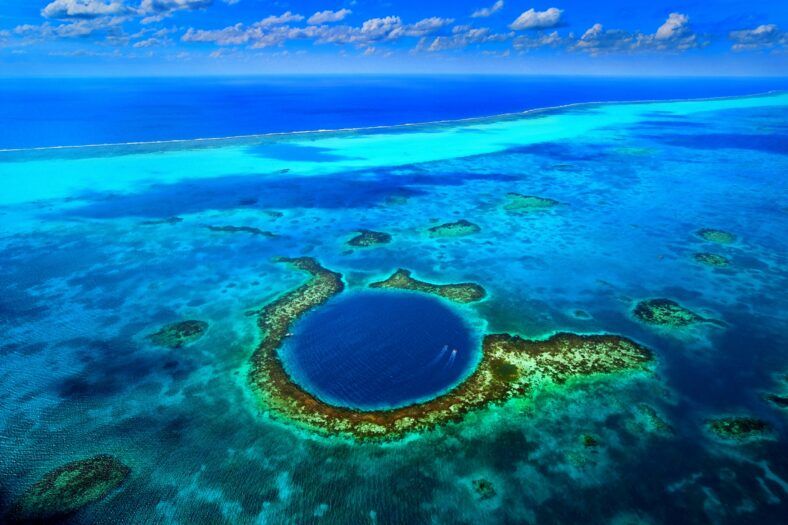New Evidence From Belize’s Great Blue Hole Shows Tropical Storms In The Caribbean Have Been Increasing In Frequency

Over the past 5,700 years, tropical storms in the Caribbean have been increasing in frequency, according to new evidence from sediment buried deep within the Great Blue Hole.
Researchers extracted a sediment core from the Great Blue sinkhole, which is located about 50 miles off the coast of Belize.
It revealed that tropical cyclones have become more frequent over the past 5,700 years, with a massive spike in just the last two decades.
“A key finding of our study is that the regional storm frequency has increased continuously since 5,700 years B.P. (before present),” said Dominik Schmitt, the lead author of the study and a researcher at Goethe University Frankfurt’s Biosedimentology Research Group.
“Remarkably, the frequency of storm landfalls in the study area has been much higher in the last two decades than in the last six millennia—a clear indication of the influence of Modern Global Warming.”
Tropical cyclones form over warm ocean waters. They are intense, rotating, low-pressure systems that transfer heat from the ocean into the upper atmosphere. They can be very destructive, producing strong winds, heavy rainfall, and storm surges.
The Great Blue Hole is a giant underwater sinkhole that is 410 feet deep. It formed around 10,000 years ago as sea levels rose during the last ice age.
The researchers extracted the sediment core from the bottom of the hole. It measures 98 feet long, which is the longest continuous record of tropical storms in the area.
The scientists determined the number of tropical cyclones that had taken place over the past 5,700 years by analyzing the layers of sediment in the core.

Sign up for Chip Chick’s newsletter and get stories like this delivered to your inbox.
Every year, two layers of sediments are usually laid down, allowing the researchers to count the previous years like the rings of a tree stump.
They discovered that tropical cyclones have become more common over the past 5,700 years, with a noticeable spike since humans started burning fossil fuels during the Industrial Revolution.
According to Schmitt, between four and 16 tropical storms and hurricanes have passed over the Great Blue Hole every century for the past six millennia.
But in just the last 20 years, researchers have found evidence of nine tropical storms blowing through the same region.
There appear to be two reasons for the rise in tropical cyclones. Most of the storms that have occurred in the past few thousand years may be due to a southward migration of the Intertropical Convergence Zone (ITCZ).
The ITCZ is near the equator and is a spot where the trade winds of the Northern and Southern hemispheres come together.
Their union results in high humidity, low atmospheric pressure, and regular thunderstorms. The northern edge of the ITCZ contains the Hurricane Main Development Region (MDR), where most tropical cyclones in the Atlantic form.
The ITCZ usually moves north in the summer and south in the winter because of changing sea surface temperatures, but it has also been moving further south over the past few thousand years.
The increase in global sea surface temperatures caused by human-induced climate change is likely responsible for the recent rise in tropical storms.
In the coming decades, tropical cyclones will become even more common. The researchers predict that as many as 45 tropical storms and hurricanes could hit the Caribbean by 2100.
The study was published in Science Advances.
More About:News





